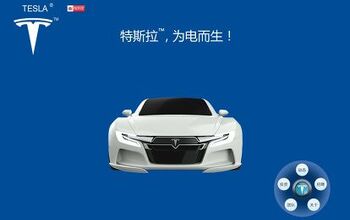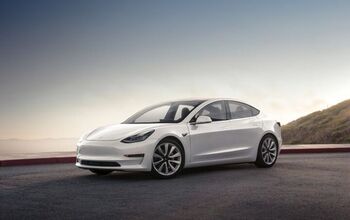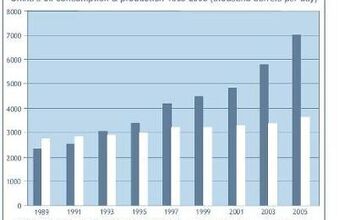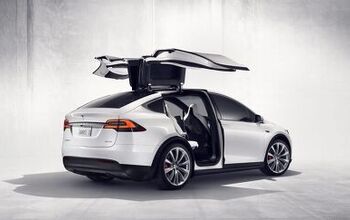Tesla Keeps Raising Prices for U.S. But Not China

This year has already seen price increases across the board, thanks largely to the supply crisis created in the wake of our response to the pandemic. As it turns out, shutting down the global economy wasn’t ideal for maintaining business as usual and nobody in charge seems all that interested in returning things to normal. Automotive prices have become particularly troublesome, as manufacturing costs have risen and a deficit of product has made this a seller’s market.
Tesla has been raising rates all year, particularly on its higher-volume models. By June, price bumps had become so common with the brand that CEO Elon Musk had to address the matter. He blamed industry-wide supply chain pressures, noting that raw materials had become particularly costly. While a totally rational explanation, there are problems with it when you realize those end-of-line price hikes aren’t being extended to China.
Long Range, dual-motor variants of the Model Y and Model 3 just had $1,000 added to their MSRP — leaving the crossover to start at $53,990, with the sedan coming in at $49,990. While U.S. customers do have access to a cheaper Model 3, that’s not the case for the Model Y and the car has seen its sticker increase by $4,000 since February. However, this pertains specifically to the U.S. market, as China has not experienced a similar uptick in vehicle pricing.
There is a laundry list of reasons for this. Tesla is focused on growth in China and recently completed Gigafactory 3 in Shanghai where it can manufacturer the Model 3 and Y for less money. It also has substantially more direct competition there and has endeavored to keep prices down to maintain a competitive edge. China accounts for almost half of all EVs sold on planet Earth, whereas the United States represents around 17 percent of the total market.
While a recent analysis from Reuters confirmed that prices have been raised in China, the frequency and amount aren’t equitable to what’s currently being endured by the United States.
From Reuters:
Tesla raised prices for Model Y Long Range at least six times in the United States this year, bumping by $5,500 [since Janurary] to $53,990. In China, the world’s most valuable carmaker raised prices of the Model Y SUV and Model 3 sedan only once this year.
The Model Y version a price tag [sic] of 276,000 yuan ($42,394). The company also has launched promotional campaigns in China such as loan offers.
“I think Tesla is looking to be as competitive as it can be in China. Lower prices will be a part of that aggressive market positioning,” Roth Capital Partners analyst Craig Irwin said. “There is a very large difference in battery prices in the U.S. and China, as well as local vehicle manufacturing costs.”
That’s true of most automakers. Vehicles are simply cheaper to produce in China and companies frequently equip them with hardware that’s a little easier on the corporate pocketbook. Some Chinese-made Tesla products use a different (see: cheaper) battery chemistry from CATL and have been alleged to offer lesser fit and finish than their U.S. counterparts. But the company’s quality control has always been a little erratic and it has de-contented Western models in the past by removing some of the sensing equipment used for the Autopilot suite.
Granted, pricing does come down in practically every market once you’ve accounted for government subsidies. But it still feels like other markets are taking the hit so Tesla can keep plugging away at making sure it’s a success in China.
On the one hand, it’s difficult to chide Tesla for engaging in the same business practices we’ve seen legacy automakers adhere to for years. Everyone wants a shot at China. But it’s different when the automaker’s entire lineup benefits heavily from the current regulatory environment and the business is propped up by government subsidies. Though it may be better to take that up with the people who enabled it, rather than those who have managed to exploit it.
We’re not really sure what’s fair or prudent here. While China is a massive country with an assumed growth potential that makes investors salivate, Tesla’s share of the market declined from 18 percent in 2020 to 11 percent in the second quarter of 2021. Despite losing some ground in the United States during the same timeframe, Teslas still represent the overwhelming majority of domestic EV sales.
[Image: Image: Helloabc/Shutterstock]

A staunch consumer advocate tracking industry trends and regulation. Before joining TTAC, Matt spent a decade working for marketing and research firms based in NYC. Clients included several of the world’s largest automakers, global tire brands, and aftermarket part suppliers. Dissatisfied with the corporate world and resentful of having to wear suits everyday, he pivoted to writing about cars. Since then, that man has become an ardent supporter of the right-to-repair movement, been interviewed on the auto industry by national radio broadcasts, driven more rental cars than anyone ever should, participated in amateur rallying events, and received the requisite minimum training as sanctioned by the SCCA. Handy with a wrench, Matt grew up surrounded by Detroit auto workers and managed to get a pizza delivery job before he was legally eligible. He later found himself driving box trucks through Manhattan, guaranteeing future sympathy for actual truckers. He continues to conduct research pertaining to the automotive sector as an independent contractor and has since moved back to his native Michigan, closer to where the cars are born. A contrarian, Matt claims to prefer understeer — stating that front and all-wheel drive vehicles cater best to his driving style.
More by Matt Posky
Latest Car Reviews
Read moreLatest Product Reviews
Read moreRecent Comments
- Jeff When Chevrolet started offering vehicles with features that were exclusive to Cadillac and Buick and Cadillac cheapened their cars to chase volume that was the beginning of the decline of the Cadillac brand. The same thing holds true for Ford and Lincoln. No compelling reason to buy the luxury brand over the lower tiered brand when the lower tiered brand can be comparably equipped for thousands less.
- Lou_BC On a different note, I read that 30% of the world's energy is now generated by "renewable" sources.
- Kjhkjlhkjhkljh kljhjkhjklhkjh not surprised their grid is as terrible as ours ...
- Lou_BC EV's are a convenient foil. Cadillac has been searching for its place. Are are they luxury performance? In your face audacious? Do they offer prestige? What sets them apart from the rest of "the look at me I'm special" vehicle market? I can buy a Denali SUV or pickup with similar luxury.
- Cprescott No big loss. It was always third rate when there was competition. At best its only good point was its price point.


































Comments
Join the conversation
All prices are up, the FED keeps printing money. It's called inflation.
I went to a Tesla showroom a couple of weeks ago, and the salesman was pretty candid saying "we expect to raise prices since we're expecting to get federal tax credits again". Not sure he's right (I do think Biden admin will expand the credits, esp since GM wants them too), but if they have demand without the $7500, they might as well try to grab some of it....